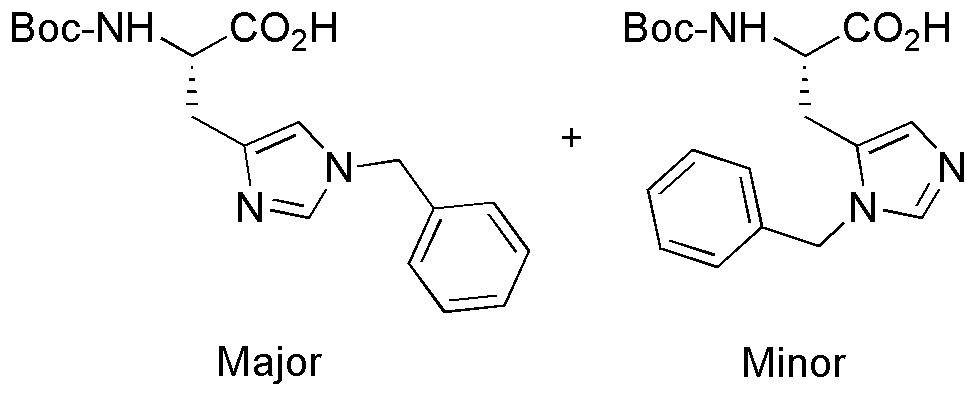Na-Boc-Nim-benzyl-L-histidine is widely utilized in research focused on:
- Peptide Synthesis: This compound serves as a key building block in the synthesis of peptides, particularly in the development of biologically active compounds and pharmaceuticals.
- Drug Development: Its unique structure allows for modifications that can enhance the efficacy and selectivity of drug candidates, making it valuable in medicinal chemistry.
- Bioconjugation: The compound is used in bioconjugation processes, where it helps attach biomolecules to therapeutic agents, improving targeted delivery in cancer therapies.
- Research in Enzyme Inhibition: It plays a role in studies aimed at understanding enzyme mechanisms, particularly in the context of designing inhibitors for various diseases.
- Protein Engineering: The compound is instrumental in protein engineering applications, providing researchers with tools to modify protein properties for enhanced stability and activity.
General Information
Properties
Safety and Regulations
Applications
Na-Boc-Nim-benzyl-L-histidine is widely utilized in research focused on:
- Peptide Synthesis: This compound serves as a key building block in the synthesis of peptides, particularly in the development of biologically active compounds and pharmaceuticals.
- Drug Development: Its unique structure allows for modifications that can enhance the efficacy and selectivity of drug candidates, making it valuable in medicinal chemistry.
- Bioconjugation: The compound is used in bioconjugation processes, where it helps attach biomolecules to therapeutic agents, improving targeted delivery in cancer therapies.
- Research in Enzyme Inhibition: It plays a role in studies aimed at understanding enzyme mechanisms, particularly in the context of designing inhibitors for various diseases.
- Protein Engineering: The compound is instrumental in protein engineering applications, providing researchers with tools to modify protein properties for enhanced stability and activity.
Documents
Safety Data Sheets (SDS)
The SDS provides comprehensive safety information on handling, storage, and disposal of the product.
Product Specification (PS)
The PS provides a comprehensive breakdown of the product’s properties, including chemical composition, physical state, purity, and storage requirements. It also details acceptable quality ranges and the product's intended applications.
Certificates of Analysis (COA)
Search for Certificates of Analysis (COA) by entering the products Lot Number. Lot and Batch Numbers can be found on a product’s label following the words ‘Lot’ or ‘Batch’.
*Catalog Number
*Lot Number
Certificates Of Origin (COO)
This COO confirms the country where the product was manufactured, and also details the materials and components used in it and whether it is derived from natural, synthetic, or other specific sources. This certificate may be required for customs, trade, and regulatory compliance.
*Catalog Number
*Lot Number
Safety Data Sheets (SDS)
The SDS provides comprehensive safety information on handling, storage, and disposal of the product.
DownloadProduct Specification (PS)
The PS provides a comprehensive breakdown of the product’s properties, including chemical composition, physical state, purity, and storage requirements. It also details acceptable quality ranges and the product's intended applications.
DownloadCertificates of Analysis (COA)
Search for Certificates of Analysis (COA) by entering the products Lot Number. Lot and Batch Numbers can be found on a product’s label following the words ‘Lot’ or ‘Batch’.
*Catalog Number
*Lot Number
Certificates Of Origin (COO)
This COO confirms the country where the product was manufactured, and also details the materials and components used in it and whether it is derived from natural, synthetic, or other specific sources. This certificate may be required for customs, trade, and regulatory compliance.

